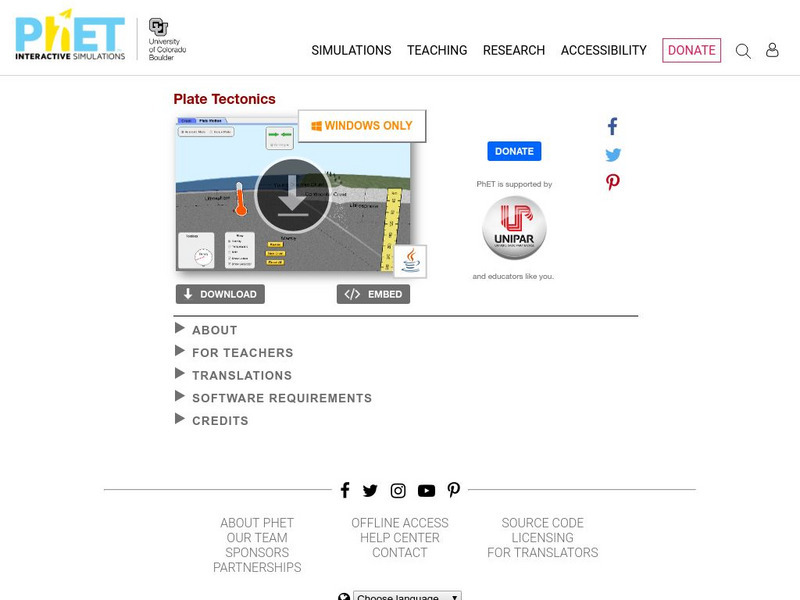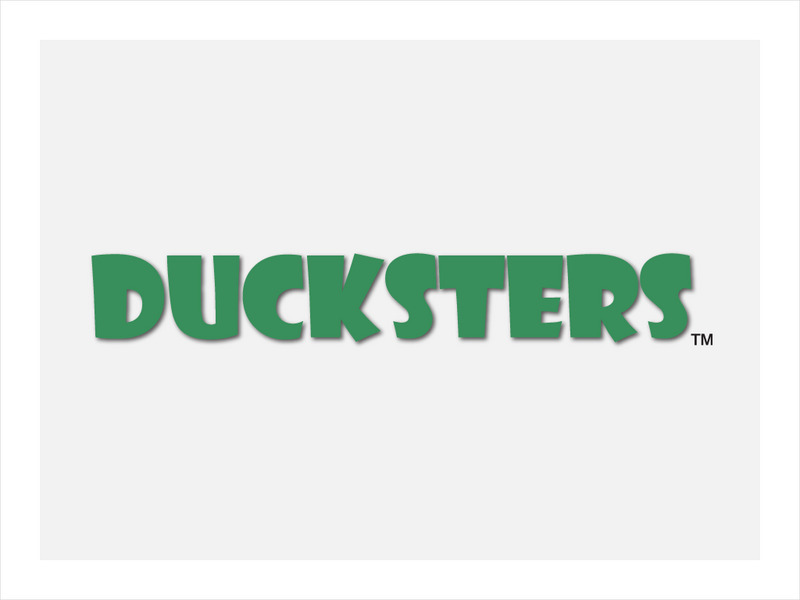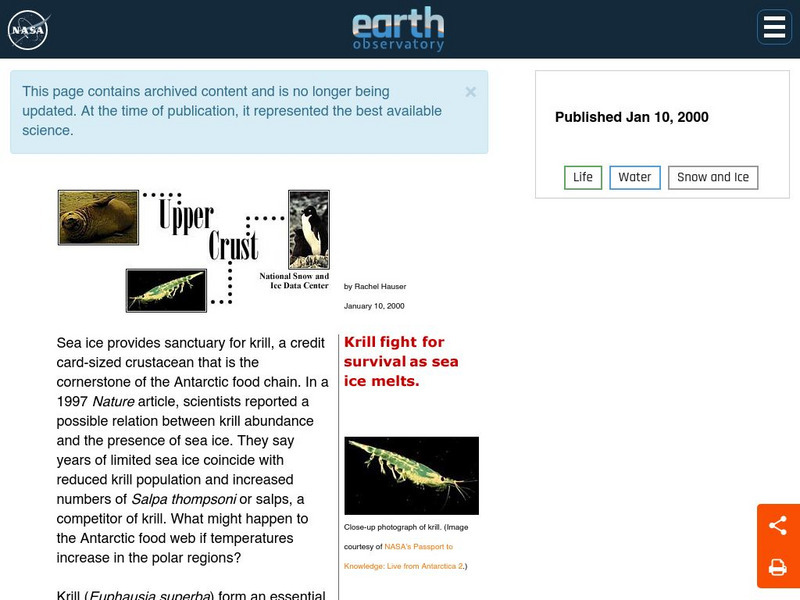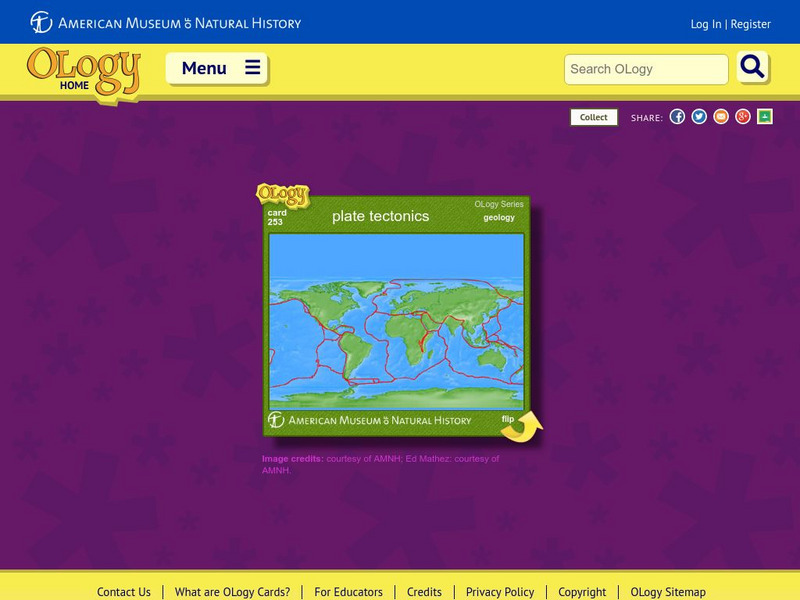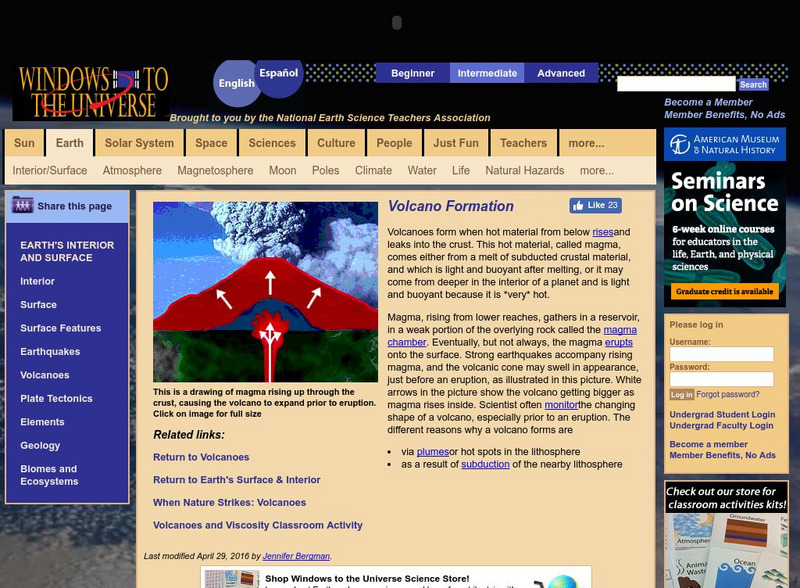Hi, what do you want to do?
Smithsonian Institution
National Museum of Natural History: This Dynamic Planet
Research and explore past earthquake and volcanic activity on this interactive world map. User can manipulate which notable events and other map characteristics to view depending on the type of study being done.
Mocomi & Anibrain Digital Technologies
Mocomi: Major Domains of the Earth Lithosphere
Learn about the lithosphere, the different types, continental drift, and the major plates.
University of California
Tectonic Plates
Get an overview of all the tectonic plates that make up the earth's crust. The colorful contrasting and labeled plate boundaries make this an excellent resource.
Other
Bc Open Textbooks: Physical Geology: Regional Metamorphism
Discusses the regional metamorphic zones in Nova Scotia, Canada, and the geological processes that caused them to form. Regional metamorphism happens deep within the Earth's crust and eventually, the buried rocks are exposed, usually due...
Energy4Me
Energy4me: Oil and Natural Gas Formation
Students will learn that oil and natural gas taken from the earth's crust today originated as small plants and animals that lived in the ocean millions of years ago.
University of Colorado
University of Colorado: Ph Et Interactive Simulations: Ph Et: Interactive Simulations: Plate Tectonics
Students studying plate tectonics will better understand its concepts with this virtual experiment that tests how plates move on the surface of the earth. Temperature, composition, and thickness of plates can be changed to create new...
Ducksters
Ducksters: Earth Science for Kids: Erosion
Study the subject of erosion including water, wind, and glacial erosion, fun facts, human causes, and controlling it on this site.
NASA
Nasa Earth Observatory: Upper Crust
Learn how krill fight for survival as the sea ice melts and the population decreases. Discover how krill relate to our food chain and learn about their development.
Other
Web ref.org: Aluminum
Here you can find a detailed overview of aluminum. Content includes a focus on aluminum's chemical properties, occurrence in nature, uses, and production.
Other
Chemical Elements: Potassium
A nice, clear site, containing a good deal of elemental information, including atomic weight, density, boiling point, isotopes and more. An image shows the electron energy levels for the element.
American Museum of Natural History
American Museum of Natural History: Plate Tectonics O Logy Card
Flip over this interactive OLogy card to find fast facts, questions and answers, and similar bite-size pieces of information about plate tectonics.
Web Elements
Web Elements Periodic Table: Magnesium
An extremely thorough summary of the properties and uses of magnesium. Very easy to follow.
US Geological Survey
Usgs: Aluminum Statistics and Information
This site provides a brief overview of aluminum, as well as reports and publications dating back to 1995 concerning the usage of aluminium in the mineral industry.
The Franklin Institute
The Franklin Institute: Clay Crash
Employ this lesson plan from The Franklin Institute to demonstrate plate tectonics and the effects. This is really just a short demonstration that could be incorporated into your existing lesson plan.
National Earth Science Teachers Association
Windows to the Universe: Volcano Formation
Explanation of the factors that result in the formation of volcanoes, some basic but helpful animations and photographs.
US Geological Survey
Usgs: The San Andreas Fault
A great overall site that tells us about the San Andreas fault, where it is and what kind of movements have occurred. It then goes on to talk about earthquakes in general and their occurrences along fault lines.
TED Talks
Ted: Ted Ed: Where Does Gold Come From?
Did you know that gold is extraterrestrial? Instead of arising from our planet's rocky crust, it was actually cooked up in space and is present on Earth because of cataclysmic stellar explosions called supernovae. CERN Scientist David...
Curated OER
Unesco: Canada: Gros Morne National Park
Situated on the west coast of the island of Newfoundland, the park provides a rare example of the process of continental drift, where deep ocean crust and the rocks of the earth's mantle lie exposed. More recent glacial action has...
Other popular searches
- Earth's Crust Diagram
- Earth's Crust Model
- Blank Diagram Earth's Crust
- Formation of Earth's Crust
- Folds in Earth's Crust
- Earth's Crust Elements
- The Earth's Crust
- The Earths Crust
- Bill Nye Earths Crust
- Folds in Earths Crust
- Earths Crust Movement
- Minerals of Earths Crust








